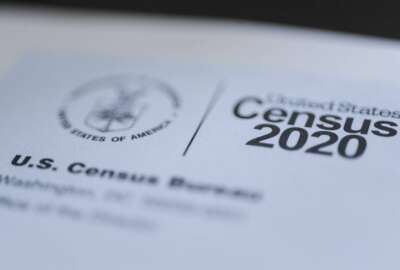Hubbard Radio Washington DC, LLC. All rights reserved. This website is not intended for users located within the European Economic Area.
Industry, feds react with optimism to OMB’s IT reforms
The administration detailed a 25-point plan to improve the way agencies buy and manage technology. Current and former government officials say OMB is using less...
By Jason Miller
Executive Editor
Federal News Radio
The 25-point plan to reform federal information technology isn’t proposing anything new or anything earth shattering. What it is doing, however, is imposing specific initiatives with clear deadlines and gathering support from the top down and the middle-up.
That was some of the ways industry and federal officials widely praised the Office of Management and Budget’s strategy to fix systemic problems with technology projects.
“Overall I think these IT management reforms are a step in the right direction,” said Tim Young, a former OMB official and now a senior manager with Deloitte Consulting. “They are consistent with commercial practices of iterative deployment of cloud technologies-crawl, walk, run-and the need for transparency and accountability of performance. Many of the reforms were based on the lessons learned from prior attempts.”
Young and other vendors are paying close attention to the direction OMB wants agencies to move to modernize the technology to run both back-office and mission-critical functions.
Vivek Kundra, the federal chief information officer, said these fundamental reforms will change the way agencies manage IT now and in the future.
Kundra said agencies will focus on two main types of investments: commodity technology such as e-mail, storage and telecommunications, which represents about $24 billion a year, and major IT projects, which represents about $50 billion a year.
“This is an area where we’ve had persistent problems that go back decades where we’ve had major IT projects that just haven’t delivered for the American people,” Kundra said during a briefing Thursday at the White House. “This is not about some radical framework or break through thinking. You can go back to the Clinger-Cohen Act, the E-Government Act and you can actually look at the Federal Acquisition Regulations. All along we’ve actually talked about how the U.S. government needs to move toward a model where we are simplifying the way we buy technology and at the same time we need to make sure we are focused on execution. It’s not about some grand design, but it’s about executing.”
Jeff Zients, OMB’s deputy director for management and chief performance officer, said the end goal is to make government technology more agile, more responsive and more accountable to the American people. At the same time, OMB hopes to remove the barriers, such as the two-year budget planning process or the layers of oversight and reporting requirements.
The 25-point plan detailed 6-12-18 month initiatives to get agencies out of the old way of developing IT projects. Instead, Kundra said agencies should use agile or modular development, have qualified program and project managers, move commodity IT to cloud computing and ensure CIOs are focused more on execution of projects and less on policy.
“I was very happy with a whole presentation and plan,” said one agency CIO, who requested anonymity because they didn’t get permission to speak from their agency. “It sort of answered this void we felt like we had where it wasn’t clear where we were going. Now I took that guidance and can see how it applies to us.”
The CIO said the strategy still is missing specifics such as how OMB expects agencies to implement reforms such as flexible budgets and changing the role of the CIO to give them more authority.
“Vivek seemed to indicate there were more details coming,” the CIO said. “I think he hit on the right things. The next step is to put pen to paper and lay out specific things. I’ve asked my team to look at what was said and to apply them against our environment and ask what it means for us. We are doing a gap analysis to see where already are meeting the requirements.”
Teri Takai, the Defense Department CIO, said during the briefing that she applauds OMB for the strategy and the Pentagon is considering many similar initiatives.
Takai, who started in October, asked why OMB hadn’t woven cybersecurity throughout the plan.
“We need to look at cybersecurity as important as our efficiencies and cost savings drives,” she said. “In many ways, for many of us, that’s going to be a way to drive many of the things you want to do here. Cost savings always are a little scary for organizations, but when we can phrase them in terms of the importance from a security perspective, and I also think security is an important trade off as you look at the way we are going to implement and we are always going to balance security where we are taking efficiencies.”
Kundra said security is vital and the reforms are baked into the $80 billion IT portfolio. He added it’s not something separate from the reforms.
Another way OMB will ensure the reforms take hold is through meetings with CIOs and agency deputy secretaries.
Bob Dix, a former staff director of House Oversight and Government Reform subcommittee on technology and procurement and now vice president of government affairs and critical infrastructure protection for Juniper Networks, said changing agency culture is a key to success.
“It’s the culture impediments that have prevented these steps from making progress in the past,” he said. “A lot of what we heard wasn’t new and I think Vivek acknowledged that. Whether or not CIOs have the appropriate authorities, are respected and whether or not the administration and leadership can overcome these culture impediments will be the main challenge. By going to shorter term initiatives, there is chance to move in that direction.”
Dix said the strategy is aggressive and ambitious, and he liked the focus on accountability and mission.
“What’s interesting to me is the whole issue of empowering agency CIOs,” he said. “We’ve been talking about it every since time I was on Hill with the Government Reform Committee. If there is an ability to follow through and get buy-in from at the secretary and deputy secretary level, there is an opportunity to make difference.”
Mark Forman, a former OMB administrator for e-government and IT and now a partner with KPMG, said the plan wants to leverage the change in how the private sector buys technology.
“I’m really encouraged by the movement Vivek, Jeff Zients and the folks in government are taking to move to the cusp of next generation alignment between business and technology,” he said. “So much of government relies on mainframe and sever-client technology, but it’s dying. The complexity limits the value on the program side and also on the cost savings side.”
Forman added the cloud-first policy pushes the government to take advantage of the commoditization of IT.
“That is not just a technology issue, it affects so many of business processes of the government,” he said. “It offers cost savings and quality of service improvements for citizens.”
Forman added agencies will have to understand how to develop and implement service level agreements for this new approach to buying IT.
“When we move to IT as a service, we will need people with expertise on migration, especially data migration,” he said. “So it will be new areas of expertise. Moving to the cloud will take a learning experience, but the government is at the forefront of learning that. OMB has got to make sure they don’t create so many expectations that we create an inability to do it right. There will be some failures, but it may not be because of bad program managers, rather because of bad change management.”
(Copyright 2010 by FederalNewsRadio.com. All Rights Reserved.)
Copyright © 2024 Federal News Network. All rights reserved. This website is not intended for users located within the European Economic Area.




